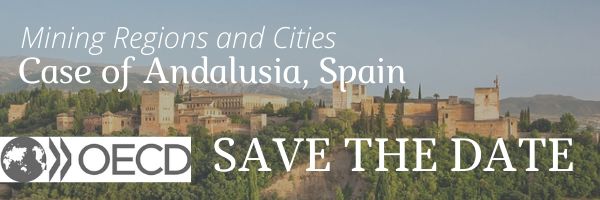About Andalucia
About the Region
Andalucia is an autonomous community in southern Spain. It is bordering with the autonomous communities of Extremadura and Castilla-La Mancha in the north; with the autonomous community of Murcia and the Mediterranean Sea in the west; with Portugal and the Atlantic Ocean in the east; and with the Mediterranean Sea and the Strait of Gibraltar in the south.
With its more than 8 million inhabitants, Andalusia is the most populous autonomous community in Spain and the second largest in terms of area, representing more than 17% of the total country area. The capital of the region is the city of Seville.
The regional economy is based on the tourism sector; the agri-food sector with the production of vegetables, olive oil and fruits; and the industry sector which is focused on energy, mining, metallurgy and chemistry. The value of Andalucia's export in 2017 amounted to more than 11% of Spain's total export. Andalucia is the second largest aerospace region in Spain and the Andalucian biotechnology sector has experienced significant growth over the past years. The geographic location and climate have also enabled the region to become one of Europe’s main locations for the development of renewable energies.
The Mining and Metallurgy Industry
Andalucia represents around 24% of the total value of mining production in Spain. The regional mining sector in Andalucia is focused in four sub-sectors: metallic mining, industrial minerals, natural stone and aggregates.
Andalucia has a large mineral potential and diversity that has been exploited from prehistoric times. Metal ores were intensively exploited at the end of the 19th century and the beginning of the 20th century in a metal rush by companies from countries such as the UK, France and Germany. After a critical period in the 90’s, new metal mining is surging with five active mines in IPB Huelva and Seville and hundreds of exploration permits all around the region. The metal ore production has made Andalucia one of the leaders of Spain’s mineral production.
In Andalucia, there are more than 500 mining exploitations of which most are for aggregate resources. The aggregate exploitations are scattered throughout the territory of the region and the production is depending on the demand from the building sector, which currently is increasing at a moderate speed. There are seven cement plants around the region with a production capacity of 8.5 million tons of cement per year. The region also has an important natural stone district in the Macael area in the Almería province, which leads the marble sector at national level with more than 70 companies processing and designing marble products.
The region also produces industrial minerals, such as silica sands, clay, strontium and dolomite. Andalucia is the primary producer of gypsum in Europe with around 6 million tons per year.
The metallurgy industry in Andalucia is represented by a copper smelting and refinery plant in Huelva, which produces 300,000 tons of copper metal annually. Another metallurgy plant in Los Barrios (Cádiz) is a stainless-steel smelting and processing plant that annually produces 1 million tons of stainless steel from scrap iron. The plant will also start to process concentrates from the mines in the Iberian Pyrite Belt. The Cobre las Cruces mine also manages a hydrometallurgy process plant. There are also some metallurgy plants of medium size (500,000 tons/year) in Seville.
Mineral Deposits and Metallurgy Production Sites
The main metal mineral deposits in Andalucia are located in the northern part of the region, from west to east, in the Varisc domain, Huelva, Sevilla, Cordoba y Jaen. Some deposits can also be found in the Alpine domain in Granada and Almeria. Districts as the Iberian Piryte Belt, Peñarroya or Linares-La Carolina, were famous for their copper, zinc and lead production.
Andalucia has five active metallic mines producing copper cathodes, copper concentrates and lead concentrates. The Aguas Teñidas, Magdalena and Sotiel mines are exploited by MATSA; the Rio Tinto mine is exploited by Atalaya Mining; and the Cobre Las Cruces mine is operated by First Quantum Company. These five mines produce 72,000 tons of metal copper annually and 700,000 tons yearly of concentrates of copper 78%, zinc 20%, and lead 2%.
The Aznalcollar mine, operated by Grupo Mexico, is currently carrying out extensive research to consolidate the significant reserves of zinc, copper, lead and silver remaining in this deposit and to increase its resources. The mine is involved in the permitting process which is expected to be completed by 2019.
In addition, tungsten and tin deposits can be found in Los Pedroches Batholith; fluorspar deposits can be found in Alpujarras; lead and silver deposits are present in the Linares district; marble deposits can be found in Sierra de Macael; and gypsum deposits can be found in Almería.
